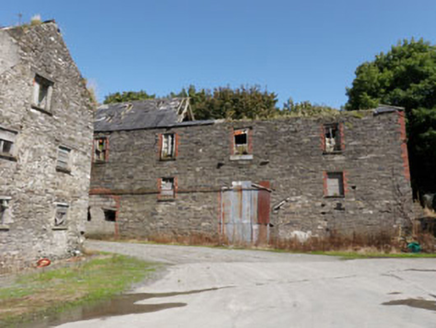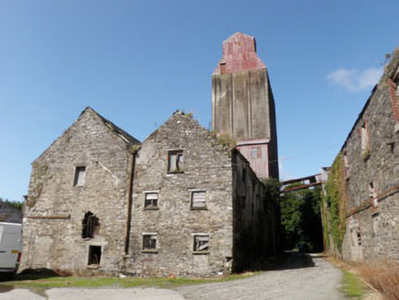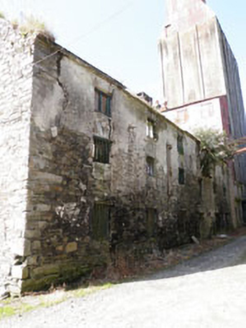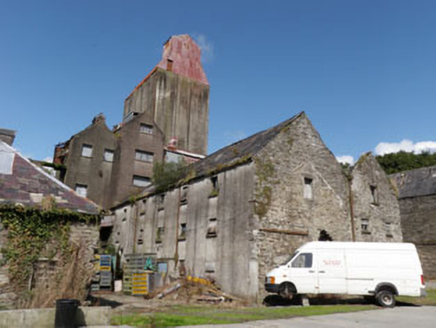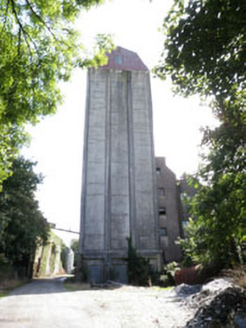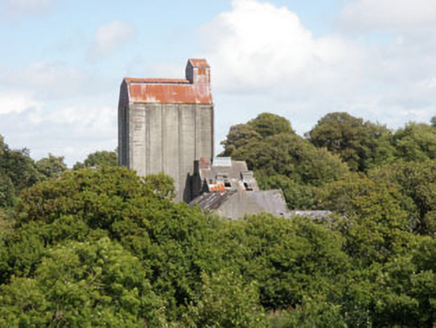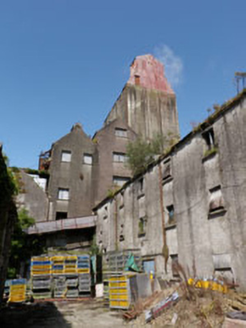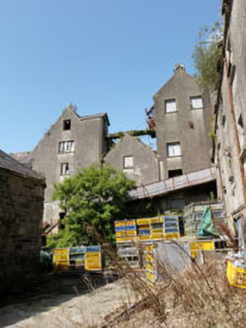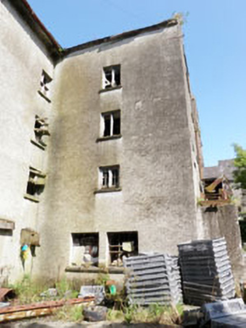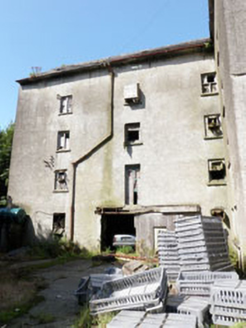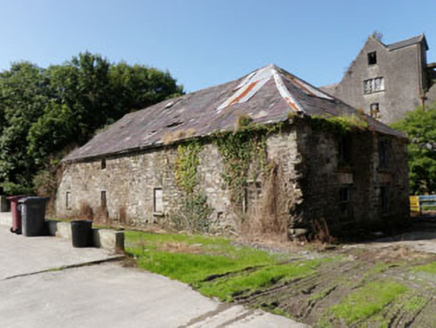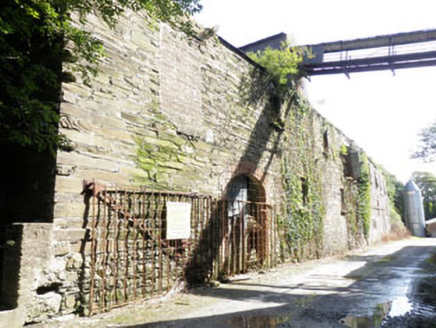Survey Data
Reg No
20912212
Rating
Regional
Categories of Special Interest
Architectural, Historical, Social, Technical
Previous Name
Shannon Vale Mill
Original Use
Mill (water)
Historical Use
Mill (water)
Date
1740 - 1780
Coordinates
139307, 44215
Date Recorded
24/08/2009
Date Updated
--/--/--
Description
Detached six-bay three-storey double-pile former mill, built c.1760, burnt and rebuilt c.1795, now ruinous, having later silo and four- and five-storey gable-fronted extensions to side (west). Detached multiple-bay two-storey block to north having recent corrugated-iron extension to rear (north). Detached multiple-bay two-storey outbuilding to south-east. Collapsing pitched slate roofs to double-pile block, having dressed stone eaves courses and remains of cast-iron rainwater goods. Gambrel corrugated-iron roof to silo with air-vents and single-storey corrugated-iron pitched projection to side (east) gable. Pitched corrugated-iron and slate roofs to attached gable-fronted blocks, having vents with timber louvers and rendered chimneystack. Collapsing hipped slate roofs to northern and south-eastern extensions with dressed stone eaves courses. Pitched slate roof to south-western outbuilding with dressed stone eaves courses. Rubble stone walls to main block with roughcast rendered rear elevation, having chamfered north-eastern corner to ground floor with stop-chamfer. Rendered walls to silo and gable-fronted extensions having vertical platbanding. Square-headed arcade with splayed coping to ground floor. Corrugated-iron walls to side extension with rendered walls to ground floor. Rubble stone walls to northern block with red brick quoins. Rubble stone walls with dressed stone quoins and eaves course to south-eastern outbuilding. Later steel and corrugated-iron conveyor spanning between first floor of north block and first floor of main block which it passes through and exits. Square-headed window openings with rendered sills throughout all blocks and outbuildings. Dressed rubble stone voussoirs to front elevation of main block and rear (east) elevation to south-east outbuilding. Timber and later concrete lintels to side (east) elevation of main block. Red brick voussoirs to front (south) elevation of northern block and to front (west) and side (north) elevations of south-east outbuilding. Stone lintels and red brick block-and-start surrounds throughout remainder of northern block. Remains of timber window frames throughout with some openings blocked with rubble stone. Segmental-headed window openings with dressed rubble stone voussoir to rear (west) elevation of south-west outbuilding, some having timber shuttering. Square-headed door openings throughout having red brick or dressed stone voussoirs with occasional timber lintels. Remains of single and double –leaf timber panelled or timber battened doors. Steel plate doors to side (east) extension of silo. Segmental-headed door and carriageway openings to northern block having red brick block-and-start surrounds, having timber battened double-leaf doors. Some blocked with rubble stone or concrete blocks. Located north of Argideen River, with remains of Millrace with timber and cast-iron sluice gate to west. Concrete yard to south of main block with driveway between main and northern blocks. Site enclosed to west by recent metal double-leaf gates.
Appraisal
Located on the northern bank of the Argideen River, this substantial mill complex is a striking landmark in the surrounding rural landscape. Established by the Earl of Shannon in the mid eighteenth century as a linen mill, it was burnt, probably by rebels, in the last decade of the century. It was operated by the Allin family as a corn mill from the 1820s onward. This complex provides an interesting insight into the changing practices of the milling industry over the past century with early rubble stone buildings standing alongside more recent structures. Despite its closure in 1961, the site has preserved its integrity. Many of the buildings have retained a great deal of their original fabric. Shannon Vale Mills also had a significant impact on the local economy and is an important part of the industrial heritage of the local area and Cork county.
